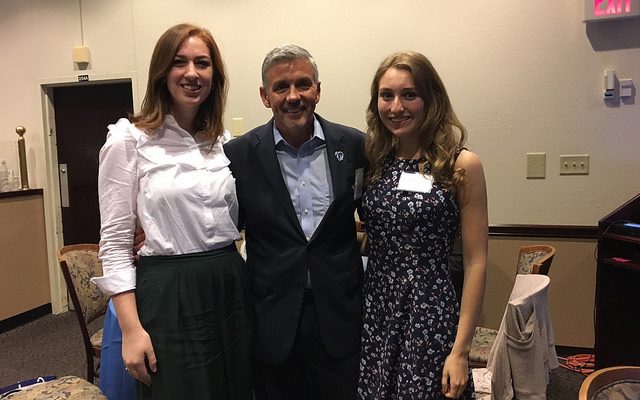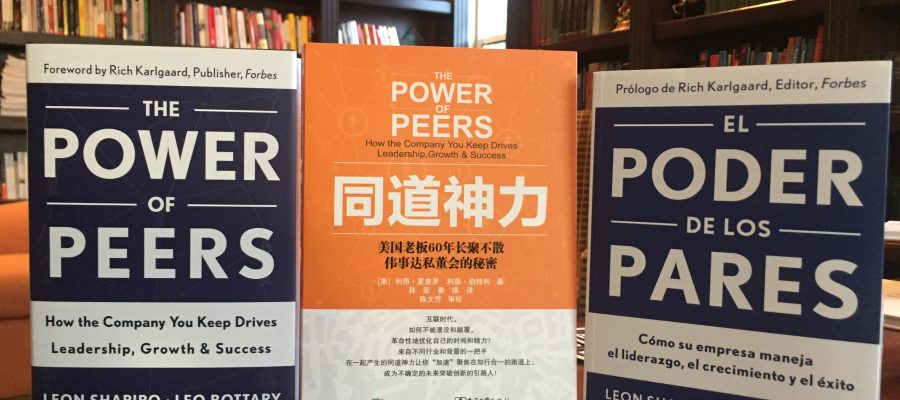Heineken recently invited us to open our world. If you haven’t seen it already, take time to watch! It will be the best 4 minutes of your day! This is what the Year of the Peer is all about!
Category: collaboration
“I’m Surrounded By Idiots!”
If you’ve ever uttered Scar’s famous quote from the Lion King (as only Jeremy Irons can express it), I suggest you pause for a moment to think about what you said. Consider the possibility that the people you’re talking about are not idiots at all, you might be just treating them that way. Or, on the off chance they really ARE idiots, then why would you surround yourself with these people in the first place?
In either case, surrounding yourself with people you respect is your responsibility – it’s on you, no one else. Who you surround yourself with matters. As you assess progress against your goals for the back half of this year, take stock of the people around you. Are they contributing to your success, holding you back, or dragging you down? While you’re at it, ask yourself if you are contributing positively to the people who depend on you to lift them up. This is the time to course correct on both fronts.
Don’t be a Scar (or one of the hyenas for that matter). Here’s the scene from the movie that inspired Scar’s famous assertion. You can do better!
Marian Salzman on Agile PR
Podcast: Play in new window | Download (32.5MB)
Subscribe: Apple Podcasts | Spotify | iHeartRadio | TuneIn | RSS | More
Marian Salzman is the CEO of Havas PR, U.S. Named one of the world’s top five trendspotters (bringing the term “metrosexual” to the world in 2003), Marian is one of the most-awarded female public relations executives in North America. Prior to joining Havas PR and the Global Collective, Marian was the Chief Marketing Officer (CMO) at Porter Novelli, CMO at JWT Worldwide, and Chief Strategy Officer at Euro RSCG Worldwide.
Author or coauthor of many books, her latest (written with the Havas PR team): Agile PR: Expert Messaging in a Hyper-Connected, Always-On World is now available.
Next week’s guest is Ryan Foland, Managing Partner, InfluenceTree.
Why Mentoring Matters
A number of years ago, I received an email from Reesa Greenwald, the director of the Seton Hall University Career Center, asking me to be a mentor in a program called CHAMP (Communication Honors Alumni Mentor Program). The program was actually launched in 2011 as the Communication Honors Associates Mentoring Program. I am a proud Seton Hall alum and was also serving as an adjunct faculty member at the time. The email was worded in a way that seemed to indicate that this was meant for people who lived in close proximity to the campus – as opposed to someone like me living in southern California. Just before I hit “delete” (assuming this email wasn’t meant for me), I reread it and thought to myself, “I could do this remotely. Maybe I’ll see if Reesa would be open to that.” Fortunately for me, she agreed to give it a try.
According to Paul Ward, the alum who spearheads this program: “CHAMP was designed to bring together successful alumni with current Communication students to share tips and practical advice on navigating the many career opportunities a degree from Seton Hall can offer. The response from the students and the mentors was overwhelmingly positive and the program allowed two generations of Pirates to develop both networking opportunities and great friendships. We’re looking forward to offering this program to even more Pirates as we move forward.”
Four years later, it appears our little experiment worked – especially for me. CHAMP mentors are matched with one student per year. I see to it that I meet with the student who is assigned to me in person at least once, but otherwise our conversations take place via Skype, Zoom, phone, email or text. I went into this hoping I could give back to the university and help some aspiring communication professionals. Turns out, I can say unequivocally that the benefits go both ways. I share my experiences and perspective, while they share their aspirations and keep me current.
A few weeks ago, I attended a CHAMP event on campus. I loved it! There was a great deal of talk about how the students benefit from the many alumni who give their time and share their expertise. While that may be true, I’m pretty sure the other alums share my sentiment about how much we all get in return. For me, it’s one more example of how 1+1 can = 3.
Pictured above are two of the students I was fortunate enough to work with and to whom I will be forever grateful and always available (l to r) Siobhan McGirl (Senior) and Sarah Auerbach (Sophomore), not pictured are graduates Phil Burrows and Mawuena Sedodo. Mentoring matters – for all involved.
Paul Michelman: Working Together In a Changing World
Podcast: Play in new window | Download (35.9MB)
Subscribe: Apple Podcasts | Spotify | iHeartRadio | TuneIn | RSS | More
Paul Michelman is editor-in-chief of MIT Sloan Management Review, serving as the guiding hand behind MIT SMR’s content strategy as it expands across both digital and print platforms. Prior to joining MIT SMR in December, 2015, Paul served as editor-in-chief of Safari Books Online. Before that, he spent a dozen years in leadership roles at two of the other premier names in management publishing: As Harvard Business Review’s executive editor and director of new editorial products, Paul launched a suite of digital initiatives over a 10-year period that today comprise the core of HBR’s online brand. And as executive editor of strategy+business, he spearheaded its digital make-over.
Next week’s guest is the CEO of Havas PR, U.S., Marian Salzman.
In the absence of communication, we fill in the gaps. Don’t!
I’ve been leading workshops for CEOs and key executives in recent months (23 workshops in all so far), where we talk about what it takes to be an even higher performing group or team. As you might imagine, effective communication emerges as critical on two fronts. 1) My workshops inspire conversations that would either never take place organically or would never happen in the larger context of the health of a group or team. Yet when they do take place, the resulting clarity that’s created often dispels erroneous perceptions. 2) When such communication doesn’t take place, it doesn’t leave a communication hole or gap because in the absence of communication, people insert their own narrative. And when they do, the narrative often creates tension, and is too often dead wrong.
Here’s a brief example: You arrange to meet a colleague at a restaurant at 1:00 PM. You’re waiting there and before you know it, it’s 1:20 PM – no call, no text, no communication. You text and call your colleague and receive no response. So what happens now? You probably start to speculate as to why your colleague is late. One of your assumptions is that (s)he simply forgot about the appointment. The longer the speculation continues, the more likely your blood pressure starts to rise, as you become increasingly annoyed by your colleague’s forgetfulness, even though you have no proof that anyone forgot about anything. You learn later that your colleague’s mother fell ill and had to be rushed to the emergency room – a bit more important than your appointment. Now you feel terrible. The hope here of course is that you didn’t go off on your colleague before (s)he had the chance to share what happened.
While this is a rather simple example, imagine the angst, misunderstanding, and resentment that can be caused when people fail to communicate with one another over the longer haul. Among the five factors of high-performing groups or teams is valuable interaction – interaction that’s fueled by effective communication. The solution: Communicate more and, in the absence of good communication, fill-in the gaps less. Resist your tendency to create your own narrative when one hasn’t been provided for you. It will reduce the stress level for you and your peers, and will likely open new avenues of opportunity.
Who You Surround Yourself with Matters (No Matter Where You Live)!
Here’s an excerpt from The Power of Peers: How the Company You Keep Drives Leadership, Growth & Success that explains why who surround yourself matters, no matter where you live or what language you speak.
“In 1976, anthropologist Edward T. Hall created a framework for examining cultures across a spectrum of what he called high-context and low-context communication. Think of a high-context culture as a tightly knit group of insiders. Here, there’s a higher level of mutual understanding and, more often than not, less need for specific explanation when communicating complex ideas. In a low-context culture, cultural norms can be more divergent, and conveying anything complex requires more specific explanation.
“High-context cultures tend to be more collectivist, cooperative, and team oriented, and they hold a deep respect for history and tradition. These cultures are more commonly found in Asia and the Middle East. Lower-context cultures tend to be more competitive, individualistic, and task oriented, with a future orientation and a larger appetite for change. Switzerland, Germany, the U.S., and the U.K. are considered lower-context cultures.
“Richard Dool, a former CEO, Fortune 500 executive, and professor at (now Rutgers University), supports Hall’s findings, explaining that, based on his experience, the dynamics in Germany, the UK, and France are all very different, but they’re all still Western or lower context. ‘They’re more individualistic than others. Now, if you look at the higher-context cultures like India, Japan, and China, they are all very different as well, but peer influence, peer respect, and peer relationships are a common theme. And I would argue they matter even more,’ Dool said.
“This concept of peer respect and peer support is deeply ingrained in high-context cultures— much more so than in the U.S. The degree and the manifestation of peer support and the way it is leveraged can be very different, but the concepts and the foundation are the same no matter where you live in the world.”
Food for thought as we celebrate the Year of the Peer!
Serving Life
The title of this post was taken from a powerful 2011 documentary narrated by Forest Whitaker about a group of inmate volunteers who staff their own hospice inside a maximum security prison in Louisiana, where the average sentence is more than 90 years. I became aware of the documentary after spending three days at a residency for prison wardens in Baton Rouge in the Spring of 2016 at the behest of Vistage Worldwide (where I worked at the time), which was exploring the prospect of including prison wardens in Vistage groups.
Here’s how the Warden Exchange eloquently and accurately portrays its mission: The Warden Exchange™ (WE) is a Prison Fellowship program empowering corrections professionals to create a legacy of safer prisons and safer communities. The Warden Exchange convenes thought leaders who exchange innovative ideas and best practices for the moral rehabilitation of inmates. Together, we can create a prison culture conducive to restorative change and successful reentry.
Essentially, wardens from all over the country come together for in-person residencies and online sessions throughout the year to learn from one another. It’s a remarkable collection of leaders who have an unspeakably difficult job. I was privileged to get to know them and blown away by a group visit to Angola – the maximum security prison that was the subject of the documentary. During my three days at the residency, I witnessed the power of peers in its full splendor – wardens learning from one another, the tireless efforts and teamwork of the Angola staff, and prisoners serving life sentences resolved to making their “community” better.
I didn’t know what to expect when I attended the residency last year, but I am grateful for having had the experience and for staying in touch with National Director for the Warden Exchange, Pedro Moreno. As a result, I led a workshop for about 40 wardens in Houston earlier today, and the group was amazing. (I also had the pleasure of talking to Burl Cain, the person who transformed Angola from the bloodiest prison in the U.S. to what it’s become today). I wish everyone could see these incredible leaders, up close and personal, to appreciate the work they do to make our society better. Best of all, they are doing it together, serving life one peer at a time!
(By the way, if you’ve never seen Serving Life, buckle up and check it out!)
Can’t Think of An Issue to Discuss With Your Group, What if…?
A common topic of conversation in the peer group workshops I conduct is that CEOs and business leaders contend they don’t always find it easy to think of a subject or issue to raise with their peers during their monthly meeting. Among the five factors or five conditions necessary to a high performing peer group is fostering valuable interaction. The problem is, you can’t have valuable interaction if you don’t have anything to interact about.
Most members see the time they spend with their peer group as when they work on their business, rather than in their business. These meetings are designed to be spent tackling the larger strategic issues that don’t often their get their due during the course of a hectic work week. That being the case, if you don’t have a pressing business issue or opportunity to raise with your group, then work on your business by calling upon your list of what if?… questions (the list you should start today)!
It’s a basic crisis communication planning tool. You simply identify the crises that could shut down or severely disrupt your business, prioritize them by the amount of damage they could cause and the likelihood they could occur, and plan a strategy for how you would handle them. What if a natural disaster destroyed your headquarters? What if your right hand person left the company without warning? What if a new competitor entered your industry sector with a disruptive technology that threatened your very existence as an organization? Your what if?… questions could be framed as opportunities as well. For example, what if your biggest competitor when out of business?
Next time you’re stuck for an issue to discuss with your peer group, grab your list of what if?… questions and pick one. Your question will likely apply to everyone, and because of it, you’ll get the whole group started on developing the kind of comprehensive strategies that could save you, your fellow members, and their respective companies someday!
Year of the Peer Joins C-Suite Radio Family and Announces Q2 Schedule
C-Suite Radio Chairman, Jeffrey Hayzlett recently welcomed Year of the Peer with Leo Bottary to the C-Suite Radio family, “Leo leads conversations about leadership, collaboration, and our future, that you just won’t get anywhere else. If you’re a leader of any organization at any level, or you want to be one someday, this show is for you.”
I couldn’t be happier than to share this journey with C-Suite Radio! For 50 weeks, I’ve committed to invite some of the best minds in the world to share their insights, stories, and recommendations about how we can work together more effectively – to seek common ground and see one another for our special gifts rather than our differences. I am so appreciative of the guests who appeared on the show in Q1. Here’s the guest lineup for Q2!
April 6 Lolly Daskal, Founder, Lead From Within
13 Pat Wadors, CHRO LinkedIn
20 Larry Robertson, Founder Lighthouse Consulting
27 Sekou Andrews, Poetic Voice
May 4 Paul Michelman, MIT Sloan Management Review
11 Marian Salzman, CEO Havas PR, US
18 Ryan Foland, Managing Partner, InfluenceTree
25 Gini Dietrich, CEO Arment-Dietrich
June 1 Leo Bottary & Randy Cantrell (Year of the Peer Update)
8 Jeffrey Hayzlett, Chairman, C-Suite Holdings, LLC
15 Christina L. Martini, Partner at DLA Piper LLP (US)
22 Scott Mordell, CEO, YPO
29 Jimmy LeBlanc/Perry Stagg, Louisiana Department of Corrections
This podcast is one of several initiatives designed to encourage leaders everywhere to collaborate more effectively. Enjoy!
About C-Suite Radio:
C-Suite Radio is the premier source of the world’s leading business podcasts for C-Suite leaders and business executives, featuring shows covering a range of topics, including sales, marketing, leadership, social media, finance, and management. C-Suite radio features premium content from top thought leaders, designed to increase knowledge, deepen understanding, and build skills to enhance readers’ personal and professional lives. Visit C-Suite Radio online and follow them on Facebook and Twitter. For more information, visit http://www.c-










